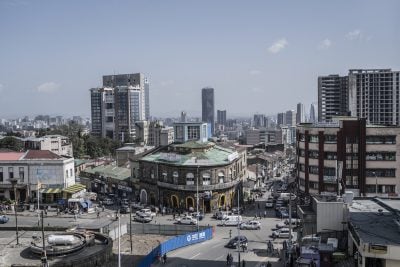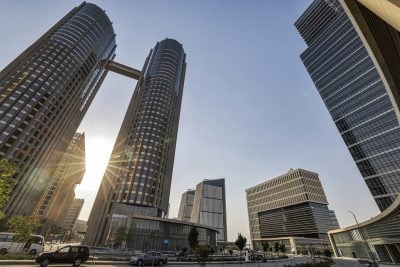Harnessing the power of the private sector is central to the AfDB’s strategy. African Banker spoke to Kodeidja Diallo, director of the bank’s private sector department, to hear more.
How are you finding your new role?
It is very exciting and important because it’s a unique opportunity to turn around the private sector business of the bank, in the sense that the portfolio of the private sector has grown significantly from $200-$300m to $2.1bn. The growth momentum is there, the demand is there, our shareholders are calling us to do more in the private sector business and more in the real private sector.
For infrastructure, the financing gap is $48bn. The African Development Bank (AfDB) has a great role to play. However, we cannot do it alone, therefore we have a new approach to bring more to Africa. Our private sector philosophy is anchored around leveraging partnerships with other development actors in the continent, other multilaterals. The second is crowding in – with every $1 we bring into the continent, we want to crowd in $6 from private sector. It’s a completely new strategy to bring more. We are doing more with less.
In order to do this, we have to work together, with other Development Finance Institutes (DFIs). We also have a new approach called mutual reliance – we want to do more and better together and to be a driving force.
Are there enough projects out there to fund?
It’s true that the issue is not liquidity. Liquidity exists, from short-term financing by commercial banks to long-term financing by DFIs or other institutional investors. The problem is bankability of projects – we don’t have sufficient critical mass of bankable projects.
So what we are doing? The bank has created a vehicle called Africa50 that is doing project development and also fundraising financing in order to have bankable projects. The private sector department also has a specific vehicle called the Project Development Company. We started with one company and, borrowing from the experience of Exim Bank in India, we take projects and the project company that we fund will develop the project and sell it to the bank or others.
It will make sure we do things better, more effectively and efficiently because we don’t have time to do all the project preparation – they will do everything up to bankability. We are replicating this experience because it’s a very positive experience.
Is the motivation for backing projects a development one or a commercial one?
For any private sector project in Africa, we have two basic criteria – financial viability and development impact. If the project has no development impact, we don’t go in. If the project has high development impact, we try to enhance the profile of the project to make it bankable and make sure it yields development results.
We have to crowd in other private sector investors and we have to address the risk-reward incentive. For that we have to have financially viable projects that are sustainable in the long run and resilient, because there is a lot of volatility in the operating environment of private sector business.
Do you target a particular time frame for investments?
We have average maturity of 15 years for infrastructure. In general, infrastructure projects are long-term projects. However, for some specific growth and transformational projects that have long-term returns we can go exceptionally for 20 years, which nobody will finance except DFIs.
Is there a lot of patience within the bank for long-term investments?
The transformational projects are large infrastructure and integrated projects, meaning you have a mine, a railway or transport corridor, a deep-sea port or industrial zone, for example. These kinds of projects are very transformational all along the line – they are more sustainable. The risk appetite at the institution for these projects is very high, and the bank employes the necessary diligence.
Is there an advantage to private sector infrastructure projects over public sector?
They are swifter in delivery, more effective because they are delivered on time and on budget, which everybody is looking for, and they tend to manage the procurement process well. The maintenance and management and operation when they are privately led are more effective and efficient.
Is it important for the AfDB to maintain strong credit ratings? What are the challenges to lending?
The private sector is not only a growth anchor but also a great contributor to the financial sustainability of the institution. For every dollar invested in the private sector you will bring four times the return in the public sector. So for the Bank’s revenue to grow, we need to boost the activities of the private sector department. Private sector projects are more risky and not backed by government guarantees, so we have to support private sector development with quality projects that will not become non-performing loans.
How often do you have to speak to the risk department of the bank?
No deal will pass through the board without the approval and endorsement of the credit risk committee of the bank. We have 54 African countries and some of them are post-conflict transition countries. Projects in these countries are very high risk by nature. We take this risk because the development impact is very high – however it has to be vetted by the credit risk committee.
With a personal background in risk, are you quite conservative?
Being in risk and coming to the private sector is complementary, I have to bring another perspective of resilience and long-term sustainability, so not going for volume but going for quality and volume combined. I have to make sure that the structuring is right and the risk dimension is mitigated, because we are there to take risk but we have to take calculated risks.
What do private sector businesses get from engagement with the AfDB that they can’t get elsewhere?
Commercial banks usually do not go beyond seven years. At AfDB they go 10, 15, even 20 years. You cannot get a 20-year loan at Libor plus 150 or 200 in the market. Nobody will take this long term. As a development finance institution, also for the country, we have the shareholder relationship. In addition to that, AfDB enjoys a preferred creditor status which grants us preferential treatment so all exchange risk and exchange control are not applied to our projects.
Want to continue reading? Subscribe today.
You've read all your free articles for this month! Subscribe now to enjoy full access to our content.
Digital Monthly
£8.00 / month
Receive full unlimited access to our articles, opinions, podcasts and more.
Digital Yearly
£70.00 / year
Our best value offer - save £26 and gain access to all of our digital content for an entire year!
 Sign in with Google
Sign in with Google 


